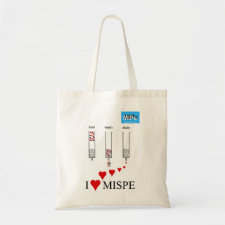
Authors: Bhakta S, Seraji MSI, Suib SL, Rusling JF
Article Title: Antibody-like Biorecognition Sites for Proteins from Surface Imprinting on Nanoparticles.
Publication date: 2015
Journal: ACS Applied Materials & Interfaces
Volume: 7
Issue: (51)
Page numbers: 28197-28206.
DOI: 10.1021/acsami.5b11650
Abstract: Natural antibodies are used widely for important applications such as biomedical analysis, cancer therapy, and directed drug delivery, but they are expensive and may have limited stability. This study describes synthesis of antibody-like binding sites by molecular imprinting on silica nanoparticles (SiNP) using a combination of four organosilane monomers with amino acid-like side chains providing hydrophobic, hydrophilic, and H-bonding interactions with target proteins. This approach provided artificial antibody (AA) nanoparticles with good selectivity and specificity to binding domains on target proteins in a relatively low-cost synthesis. The AAs were made by polymer grafting onto SiNPs for human serum albumin (HSA) and glucose oxidase (GOx). Binding affinity, selectivity, and specificity was compared to several other proteins using adsorption isotherms and surface plasmon resonance (SPR). The Langmuir-Freundlich adsorption model was used to obtain apparent binding constants (KLF) from binding isotherms of HSA (6.7 x 10^4) and GOx (4.7 x 10^4) to their respective AAs. These values were 4-300 fold larger compared to a series of nontemplate proteins. SPR binding studies of AAs with proteins attached to a gold surface confirmed good specificity and revealed faster binding for the target proteins compared to nontarget proteins. Target proteins retained their secondary structures upon binding. Binding capacity of AAHSA for HSA was 5.9 mg HSA/g compared to 1.4 mg/g for previously report imprinted silica beads imprinted with poly(aminophenyl)boronic acid. Also, 90% recovery for HSA spiked into 2% calf serum was found for AAHSA
Template and target information: protein, human serum albumin, HSA, glucose oxidase, GOx
Author keywords: molecular imprinting, silica nanoparticles, human serum albumin (HSA), surface plasmon resonance (SPR), Langmuir-Freundlich adsorption



Join the Society for Molecular Imprinting

New items RSS feed
Sign-up for e-mail updates:
Choose between receiving an occasional newsletter or more frequent e-mail alerts.
Click here to go to the sign-up page.
Is your name elemental or peptidic? Enter your name and find out by clicking either of the buttons below!
Other products you may like:
 MIPdatabase
MIPdatabase









